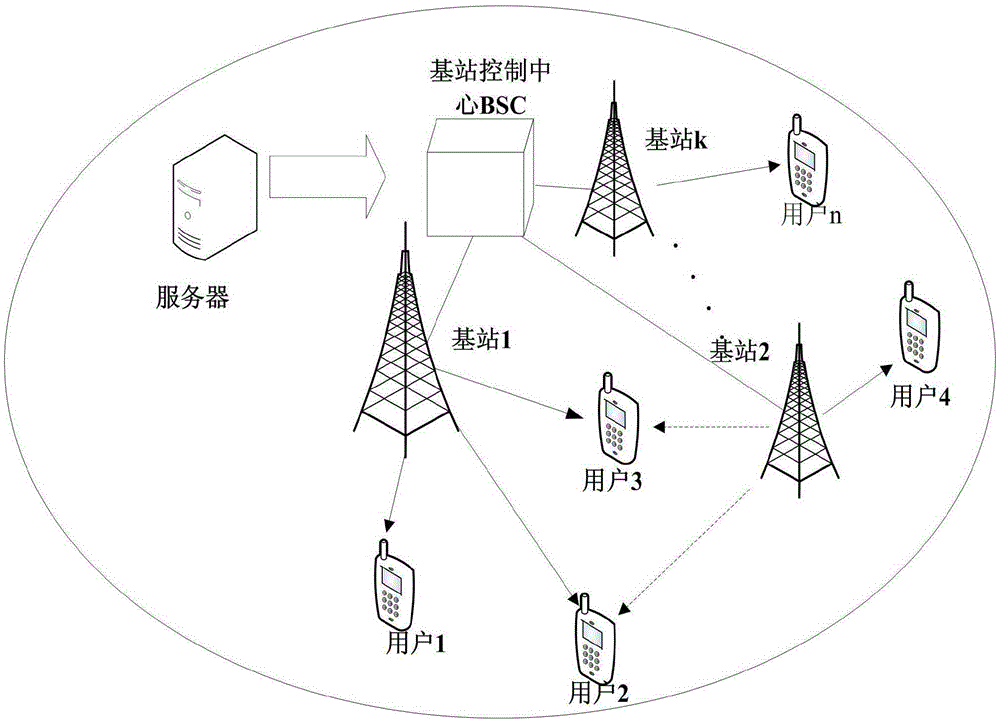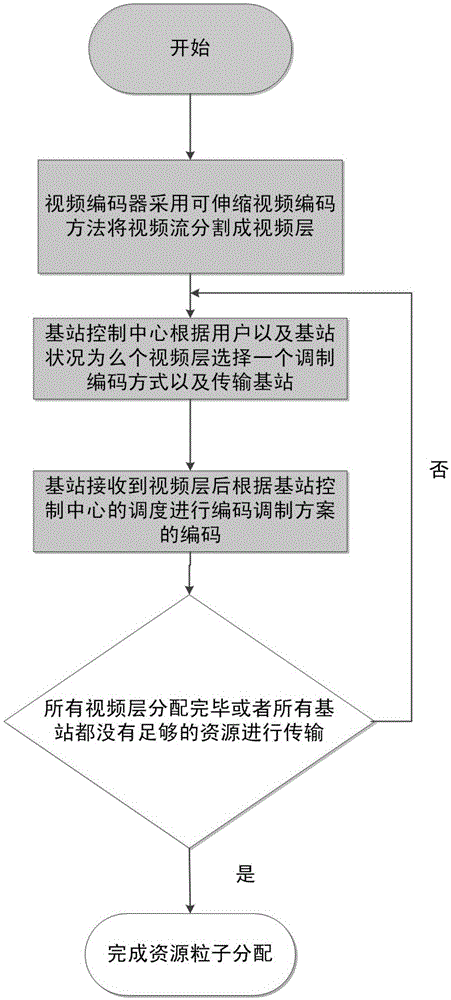Multicast resource distribution and transmission method for scalable video in system with multiple base stations
A technology of resource allocation and transmission method, applied in the field of multicast resource allocation and transmission, can solve the problems of multi-base station system not getting too much research, data transmission interference, etc., to achieve good video service quality, improve video quality, and increase capacity Effect
- Summary
- Abstract
- Description
- Claims
- Application Information
AI Technical Summary
Problems solved by technology
Method used
Image
Examples
Embodiment Construction
[0042] In this embodiment, a multicast resource allocation and transmission method for scalable video in a multi-base station system is a resource allocation scheme for data transmission in a multi-base station system, such as figure 1 As shown, the multi-base station system is composed of a server, a base station control center BSC, K base stations, N s The server is directly connected to the base station control center, and transmits the data to the base station control center through a reliable link. The base station control center performs scalable video multiplayer for the system according to the user's real-time channel status and the resource particle status of each base station. Broadcast resource allocation, from the lower layer to the upper layer, designate a base station that can cover users to the maximum extent as the transmission base station of the video layer, and select an appropriate modulation and coding method for each video layer, until all video layers are...
PUM
 Login to View More
Login to View More Abstract
Description
Claims
Application Information
 Login to View More
Login to View More - R&D
- Intellectual Property
- Life Sciences
- Materials
- Tech Scout
- Unparalleled Data Quality
- Higher Quality Content
- 60% Fewer Hallucinations
Browse by: Latest US Patents, China's latest patents, Technical Efficacy Thesaurus, Application Domain, Technology Topic, Popular Technical Reports.
© 2025 PatSnap. All rights reserved.Legal|Privacy policy|Modern Slavery Act Transparency Statement|Sitemap|About US| Contact US: help@patsnap.com



